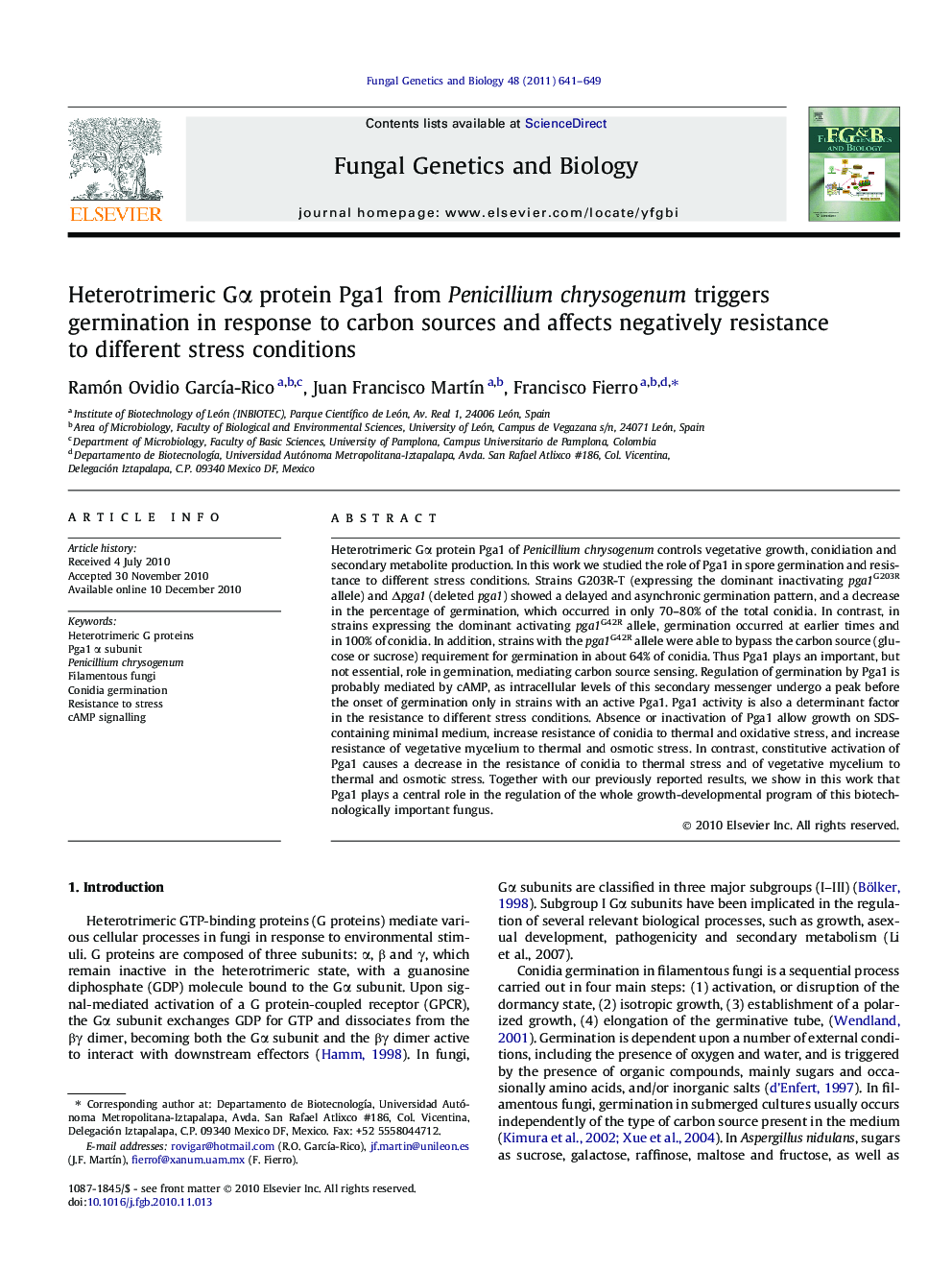| Article ID | Journal | Published Year | Pages | File Type |
|---|---|---|---|---|
| 10939543 | Fungal Genetics and Biology | 2011 | 9 Pages |
Abstract
Cellular processes controlled by the Gα protein Pga1 in P. chrysogenum. Pga1 blocks asexual sporulation, mainly by a cAMP-independent pathway (GarcÃa-Rico et al. 2008, Biochem. Cell Biol. 86, 57), and modifies cell wall integrity resulting in reduced resistance to different stress conditions. Pga1 triggers germination upon carbon source sensing, most likely through a cAMP-mediated process. The involvement of a seven-transmembrane receptor is hypothetical, based on findings from Neurospora crassa and other filamentous fungi (Li et al. 2007, Annu. Rev. Microbiol. 61, 423). Other as yet unidentified pathway/s, also activated by carbon sources, can trigger germination. Pga1 is also a regulator of secondary metabolism and activates penicillin biosynthesis (GarcÃa-Rico et al. 2008, Microbiology 154, 3567). Probable participation of the bg dimer in some of the processes is inferred from the different phenotypes of strains Dpga1 and G203R-T. Solid lines indicate effects demonstrated by experimental data, and dashed lines effects suggested from the results. brlA and wetA are genes from the conidiation central regulatory pathway.
Keywords
Related Topics
Life Sciences
Biochemistry, Genetics and Molecular Biology
Cell Biology
Authors
Ramón Ovidio GarcÃa-Rico, Juan Francisco MartÃn, Francisco Fierro,
